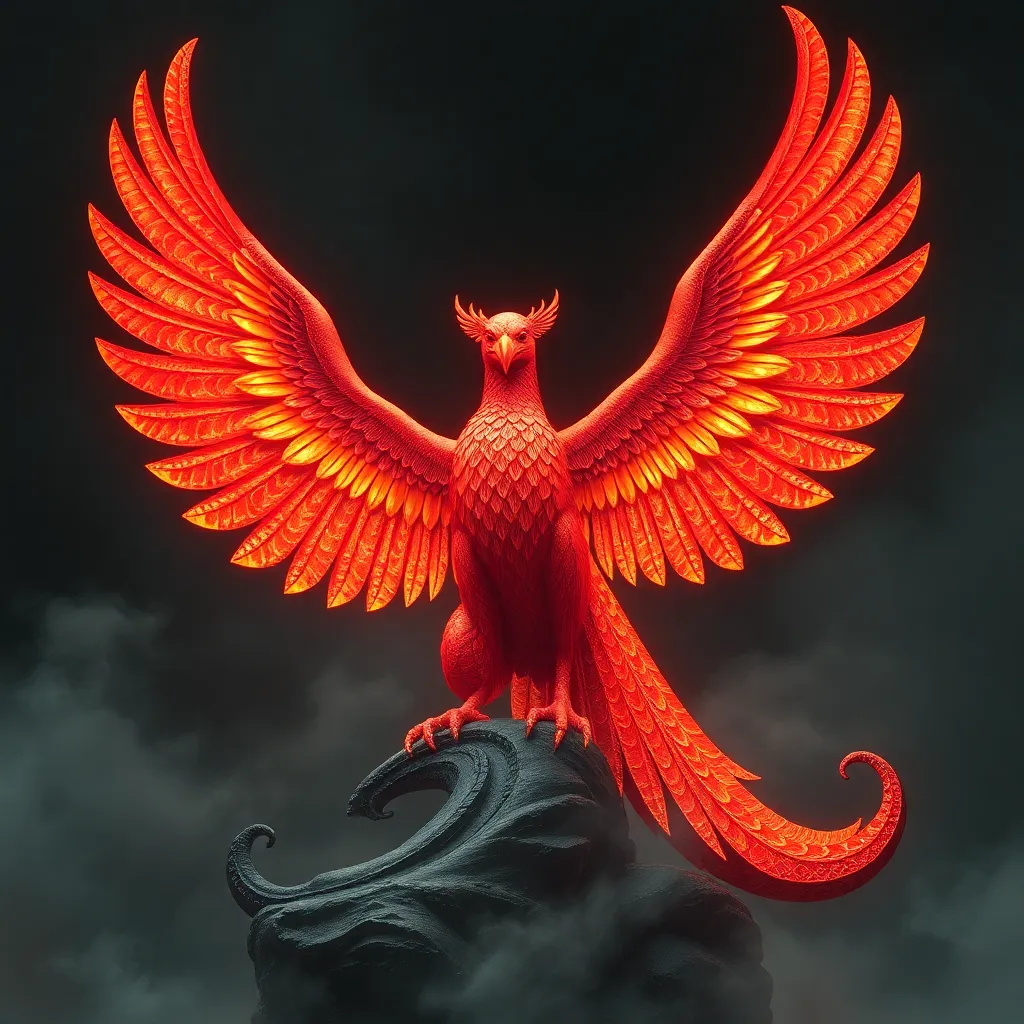Garuda in the Modern World: The Bird-Man’s Influence on Literature, Cinema, and Popular Culture
I. Introduction
Garuda, a prominent figure in Hindu and Buddhist mythology, is often depicted as a large bird or a humanoid figure with bird-like features. This mythical creature serves as a mount for Lord Vishnu in Hinduism and is revered for its incredible speed and power. As a symbol of strength and devotion, Garuda has transcended its ancient origins and found a place in modern literature, cinema, and popular culture.
The importance of Garuda extends beyond religious narratives; it reflects the shared cultural heritage of several Asian societies. This article aims to explore Garuda’s influence in contemporary contexts, examining how this mythical bird-man continues to inspire various forms of artistic expression and storytelling.
II. The Mythological Roots of Garuda
Garuda’s origins can be traced back to ancient Hindu and Buddhist texts, where he is celebrated as a divine being. His portrayal varies across different scriptures, but certain themes remain consistent:
- Historical significance: Garuda appears in texts such as the Mahabharata and Puranas, where he is depicted as a fierce protector and a symbol of divine intervention.
- Symbolism: Garuda embodies power, speed, and unwavering devotion. He is often associated with the sun and is seen as a figure who conquers darkness.
- Role in teachings: In many stories, Garuda represents the struggle against oppression and the pursuit of knowledge, often serving as a guide for those seeking enlightenment.
III. Garuda in Contemporary Literature
In modern literature, Garuda continues to inspire authors across genres. His representation often reflects the themes of transformation, resilience, and the quest for identity.
Some notable aspects include:
- Analysis of modern novels: Contemporary stories often weave Garuda into narratives exploring cultural identity and personal growth. Authors utilize Garuda’s symbolism to convey deeper meanings about the human experience.
- Themes and motifs: Common themes associated with Garuda include freedom, justice, and the interplay between the human and divine. These motifs resonate with readers seeking connections to their cultural roots.
Case studies of notable authors include:
- Rudyard Kipling: In some adaptations of Kipling’s works, Garuda serves as a metaphor for the struggle against colonialism.
- Devdutt Pattanaik: The Indian author often incorporates mythological figures like Garuda into his storytelling, exploring their relevance in contemporary society.
IV. The Representation of Garuda in Cinema
Garuda’s cinematic portrayals often emphasize his majestic and powerful nature. Various films have depicted Garuda or drawn inspiration from his mythology:
- Overview of films: Films such as “The Legend of Bhagat Singh” and animated features like “Hanuman” showcase Garuda’s role within the larger narrative of Indian mythology.
- Genre analysis: Garuda has appeared in various genres, including animation, action, and fantasy. Each genre brings a unique perspective to his character, often focusing on themes of heroism and sacrifice.
The impact of these portrayals has significantly shaped audience perceptions of Garuda, transforming him into a symbol of cultural pride and resilience.
V. Garuda’s Influence on Popular Culture
Garuda’s influence extends into various realms of popular culture, manifesting in fashion, art, video games, and cultural festivals:
- Fashion and art: Designers have drawn inspiration from Garuda’s imagery, incorporating motifs into clothing lines and artistic expressions. Garuda’s representation often embodies themes of freedom and creativity.
- Video games: Games like “Smite” and “Dota 2” feature characters inspired by Garuda, allowing players to engage with the mythology in interactive ways.
- Cultural festivals: Events such as the Garuda Festival in Indonesia celebrate the mythical bird, showcasing traditional performances and rituals that honor its significance.
VI. Comparative Analysis: Garuda and Other Mythical Creatures
Garuda shares similarities and differences with other mythical creatures, such as the Phoenix and Griffin:
- Similarities: All three figures symbolize rebirth and transformation, representing the cycle of life and death.
- Differences: While the Phoenix is often associated with fire and resurrection, and the Griffin combines the characteristics of an eagle and a lion, Garuda uniquely embodies the qualities of speed, power, and devotion.
This comparative analysis highlights the cross-cultural exchange of mythological themes, showcasing how Garuda holds a unique place in the pantheon of mythical beings.
VII. The Future of Garuda in Global Culture
As globalization continues to influence cultural narratives, Garuda’s presence in literature and media is likely to evolve:
- Emerging trends: New literary works and adaptations are likely to explore Garuda’s story through modern lenses, reflecting contemporary societal issues.
- Potential for new adaptations: With the rise of digital media, there is significant potential for animated series and films that reimagine Garuda’s character for younger audiences.
- The role of globalization: Global cultural exchanges may lead to a broader appreciation and reinterpretation of Garuda, allowing for diverse artistic expressions that resonate worldwide.
VIII. Conclusion
In summary, Garuda’s significance in modern contexts is profound, reflecting a blend of ancient wisdom and contemporary interpretation. As a figure of power, speed, and devotion, Garuda continues to inspire artists, authors, and filmmakers, ensuring that his legacy endures in human storytelling.
The relevance of mythological figures like Garuda in contemporary society highlights the enduring nature of these narratives, providing insight into the values and aspirations that shape our cultural identities.



